
Hello STEM and Science Friends! As you are winding down this school year, you might be thinking about next year already. (Yeah, right, I know!) But, seriously, you might be thinking about adding more science or STEM to your classroom next year. I thought it might be helpful to address the three most asked questions I consistently get from teachers that are thinking about STEM.
- I have tried STEM tasks, but I worry when I see students doing something that I know won’t work. What do you do when you see students that are going to fail at the task?
- Doesn’t it take tons of planning to prepare for STEM?
- What do you do about materials? Isn’t this expensive?
Let’s tackle these questions and get you ready for next year (or right now!)
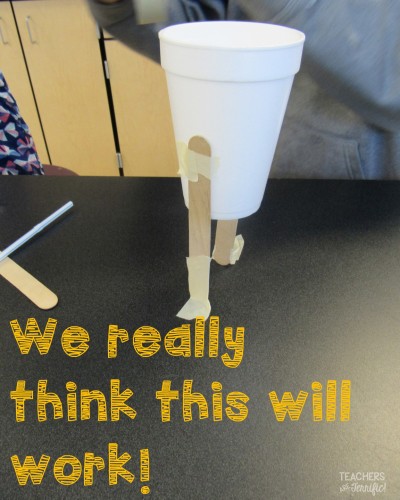
Do I ever see students trying something that I KNOW is not going to work? What do I do? Friends, this happens almost daily. Look at that photo above. This team is building a water tank for a pipeline. Water will be poured into that cup. Will it stand up? NO! Did I tell them? No, I did not. I truly believe this is the best way for kids to learn. The STEM Lab is not a place for cookie-cutter tasks. Every end result of our projects is not the same. Plenty of them totally fail. Here’s the thing: It’s the effort behind the tasks that creates the best learning.
And, believe it or not, it is in failing that I see kids have more “aha” moments.
The kids in the photo above learned a valuable lesson they won’t soon forget. Take a look at this photo:
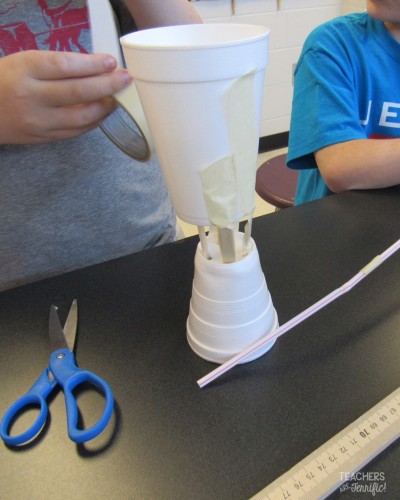
The team in this one made the same mistake as the first group. Their water tank is going to get top heavy when water is added and it will likely tip over. I didn’t tell them my thoughts either! It didn’t work and they also learned a lot! I can’t tell you how many times I have heard students say something like this, “I know this won’t work because I remember…….” and they relay a lesson learned in another task, sometimes even from a year ago.
So, what’s the answer to the question? Let kids make mistakes. This is the best way to learn! (The only exception to this is if I see something that I consider to be unsafe.)
Next Question: How about the planning? Doesn’t this take a lot of time?
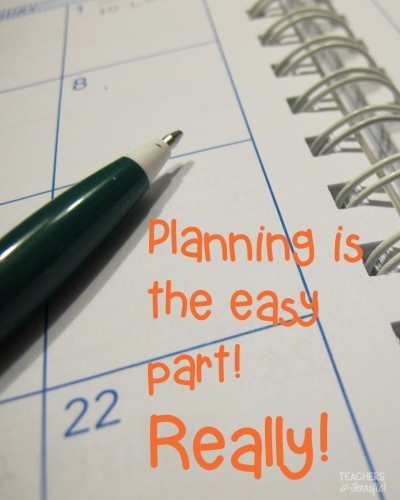
Really, I am not kidding! Block off some time for your STEM challenge, gather the materials, get ready to give your students some basic, simple instructions, and they will do the rest. Your time, after kids get started on their project, will consist of troubleshooting, helping with small chores students need you for, and lots of listening and observation. It’s so fun! In fact, just the other day a student said this to me,
“I want your job when I grow up because it seems like so much fun!”
So, what’s the answer to the planning question? No, it doesn’t take extra time. It takes no more than a regular lesson that you plan in other subjects! It’s maybe even easier!

Here’s the number one question I am asked all the time: How do I get supplies? Isn’t this expensive? If your school system chooses to purchase pre-made engineering kits it can be costly. But, here’s a truth…..are you ready? You can build about anything with straws and masking tape, or craft sticks and cardboard tubes, or pipe cleaners and unifix cubes. Seriously. Where do I get materials I need?
- The Dollar Tree
- Local hardware stores
- Parents- ASK THEM! This past school year we added straws, craft sticks, and toothpicks to our school supply lists- one item for each grade level. Friends, I have enough of all of those now to last for two more years! Click {HERE} for a blog post of mine that will give you more info about materials from the Dollar Tree.
There you go, teacher friends, answers to three basic questions about getting ready for STEM soon! If you have more questions you can ask right here at STEM Activities for Kids, my personal blog Teachers are Terrific Blog, or my Facebook page Teachers are Terrific Facebook!

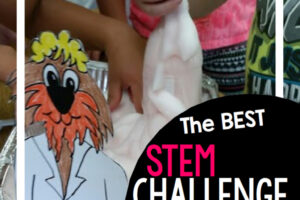
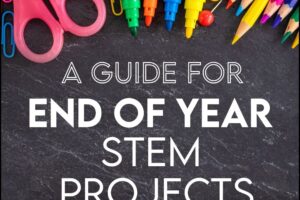
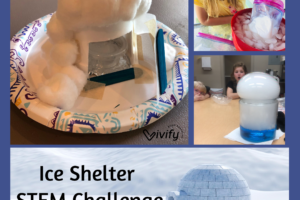
Leave a Reply
Your email is safe with us.